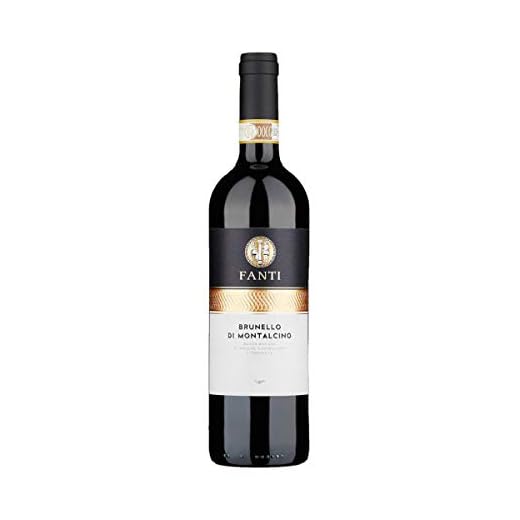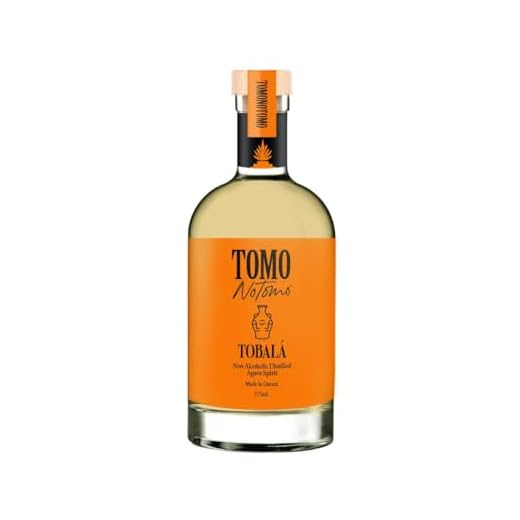



After years of experience, I often recommend exploring the nuances of fermented grapes over distilled spirits for those seeking depth and complexity in their drinking experience. The vast array of flavors and aromas found in different varietals can enhance meals and elevate social gatherings, providing a rich tapestry of sensory delights that many find appealing.
Research indicates that moderate consumption of fermented beverages may offer certain health benefits, such as improved heart health and increased longevity, primarily due to antioxidants like resveratrol. In contrast, while distilled beverages can be enjoyed in moderation, they often lack the same range of beneficial compounds and may lead to faster intoxication due to higher alcohol content.
When it comes to food pairings, the versatility of fermented beverages stands out. The acidity and tannins present in many varieties can complement a wide range of dishes, from rich meats to delicate seafood, enhancing the overall dining experience. Distilled spirits, while enjoyable in cocktails, often play a more limited role in food pairing.
Ultimately, the choice depends on personal preference and context. However, I encourage you to explore the diverse world of fermented beverages, as they offer a unique journey through flavor that can be both educational and pleasurable.
Is Wine Superior to Spirits?
Choosing a fermented grape beverage over distilled spirits can offer a range of advantages, particularly in the context of health benefits and gastronomic pairings. Studies indicate that moderate consumption of grape beverages is associated with lower risks of heart disease due to the presence of antioxidants like resveratrol. This compound is known for its potential to improve cardiovascular health by enhancing endothelial function.
Health Benefits Comparison
Research highlights several key distinctions between fermented grape drinks and distilled spirits:
| Aspect | Fermented Grape Beverage | Distilled Spirits |
|---|---|---|
| Caloric Content | Generally lower in calories per serving | Higher due to added sugars in many cocktails |
| Antioxidants | Rich in polyphenols | Minimal antioxidant content |
| Serving Size | Standard serving is typically 5 ounces | Standard serving is about 1.5 ounces |
| Impact on Blood Sugar | Lower glycemic impact | Can spike blood sugar levels |
Food Pairing Potential
Pairing options with grape beverages are extensive, enhancing the dining experience. The acidity and complexity of these beverages can complement various dishes, from seafood to red meats. In contrast, distilled options often require careful selection to avoid overpowering flavors. For instance, a crisp white can elevate a light salad, while a robust red pairs beautifully with grilled meats. Experimenting with pairings can lead to delightful discoveries.
Nutritional Differences Between Wine and Liquor
When comparing the nutritional profiles of these two beverages, distinct variances emerge. A standard serving of a fermented beverage typically contains fewer calories and carbohydrates compared to distilled spirits. For instance, a 5-ounce serving of a red fermented drink can have around 125 calories, while a 1.5-ounce serving of a distilled beverage often ranges from 90 to 100 calories, depending on the proof and added mixers.
Calories and Carbohydrates
Fermented beverages are generally richer in carbohydrates due to the residual sugars left from the fermentation process. Here’s a quick breakdown:
- 5 oz of red fermented drink: ~125 calories, ~4 grams of carbs
- 5 oz of white fermented drink: ~120 calories, ~3 grams of carbs
- 1.5 oz of distilled spirit: ~90-100 calories, 0 grams of carbs
Antioxidants and Other Compounds
Fermented varieties contain beneficial compounds such as resveratrol, flavonoids, and other antioxidants, which may offer health benefits. In contrast, distilled spirits lack these antioxidants due to the distillation process. Key components include:
- Phenolic compounds in fermented beverages may contribute to heart health.
- Distilled spirits often contain congeners, which can affect hangover severity.
For those who are health-conscious, the decision may hinge on calorie and carbohydrate intake, as well as the potential health benefits associated with certain compounds found in fermented varieties. Always consider moderation and personal health conditions when making choices regarding these beverages.
Impact on Health: Wine vs. Spirits
Moderation is key. Studies indicate that moderate consumption of fermented grape beverages can contribute to cardiovascular health due to the presence of antioxidants like resveratrol. On the other hand, distilled beverages often lack these beneficial compounds, potentially leading to higher risks of certain health issues when consumed excessively.
Research shows that those who enjoy fermented beverages may experience lower incidences of heart disease compared to heavy consumers of distilled alternatives. The alcohol content in spirits is significantly higher, which can lead to quicker intoxication and increased chances of developing alcohol-related problems.
Furthermore, the caloric content varies; fermented options generally contain fewer calories per serving than their distilled counterparts. This can influence weight management and overall health. Choosing a lower-calorie option is often advisable for those mindful of their calorie intake.
Considering the potential impact on mental health, moderate enjoyment of fermented beverages has been associated with lower levels of depression and anxiety. In contrast, excessive consumption of stronger spirits can lead to mood swings and increased stress levels.
Always consult with a healthcare professional regarding alcohol consumption, especially if there are existing health concerns or medications involved. Prioritizing informed choices fosters a healthier lifestyle.
Pairing Wine and Liquor with Food
For a delightful dining experience, I recommend considering the flavors of both beverages. When serving rich meats like duck or lamb, a robust red is an excellent choice, as its tannins complement the dish’s fat. On the other hand, a smooth bourbon can enhance the sweetness of grilled vegetables, creating a harmonious balance.
Seafood pairs beautifully with crisp whites. A zesty Sauvignon Blanc cuts through the richness of salmon, while a light gin and tonic brings out the freshness of shrimp cocktails. For spicy dishes, such as Indian or Thai cuisine, a slightly sweet Riesling or a well-balanced rum can temper the heat, allowing the spices to shine without overwhelming the palate.
For dessert, consider a rich port alongside dark chocolate or a sweet vermouth with a fruit tart. The sweetness of these beverages can elevate the dessert, enhancing the overall flavor profile of the meal. To learn about cooking times for specific dishes, check out this guide on how long does it take to cook a turducken.
Experimenting with different combinations can lead to unexpected and delightful discoveries. Always trust your palate, and don’t hesitate to try unconventional pairings. The goal is to find what resonates with your taste buds, creating memorable moments around the table.
Alcohol Content: What You Need to Know
Understanding alcohol content is crucial when selecting beverages. The alcohol by volume (ABV) percentage is the key indicator of strength. Typically, wines range from 8% to 15% ABV, while spirits can exceed 40%. This stark difference influences how quickly one may feel the effects and how to enjoy responsibly.
Measuring Alcohol Levels
To gauge your intake, always check the label. For instance, a standard serving of wine (5 ounces) generally contains around 12-14% ABV. Conversely, a shot of distilled spirit (1.5 ounces) usually clocks in at 40% ABV. With this information, you can better manage consumption and avoid overindulgence.
Implications for Enjoyment
The higher alcohol concentration in spirits can lead to faster intoxication. If savoring flavors is your goal, slower consumption of lower ABV options allows for a more nuanced tasting experience. Pairing meals with lighter options can enhance the overall enjoyment, creating a harmonious balance on your palate.
Cost Comparison: Wine and Liquor Choices
When considering your budget, the price of fermented grapes versus distilled spirits can vary significantly. On average, a decent bottle of wine can range from $10 to $50, while high-quality spirits often start around $20 and can reach into the hundreds for premium brands. For regular consumption, choosing a bottle of red or white can be more economical than purchasing small bottles of hard alcohol.
Value for Money
For gatherings or meals, a single bottle of wine typically serves four to five people, translating to about $2 to $12 per serving. In contrast, a cocktail made with spirits generally costs more per drink, especially when factoring in mixers and garnishes. A well-made cocktail can cost anywhere from $8 to $15 at a bar, making home preparation more appealing if you enjoy mixed drinks.
Long-Term Financial Considerations
For those looking to enjoy drinks regularly, investing in a few good bottles of wine can provide an excellent return in terms of enjoyment and pairs well with meals, enhancing overall dining experiences. Spirits, while versatile, may lead to increased spending if cocktails become the norm. Balancing both choices in your budget allows for flexibility in occasions and preferences.
Cultural Perceptions: Wine vs. Spirits in Society
Understanding societal views on fermented beverages and distilled spirits reveals intriguing insights. Different cultures often have unique customs and traditions associated with each type of drink. For example, in Mediterranean regions, fermented beverages are integral to meals and social gatherings, reflecting a lifestyle of moderation and culinary harmony.
In contrast, distilled spirits often carry associations with celebration and festivity in various cultures. They are frequently featured in toasts or ceremonies, symbolizing a moment of joy or significant milestones. This contrast shapes how individuals approach consumption, influencing choices at social events.
- Regional Preferences: In countries like France and Italy, the appreciation for fermented beverages is deeply rooted, often linked to heritage and gastronomy.
- Occasion-Based Choices: Distilled spirits might be preferred during celebrations, while fermented drinks are selected for casual dining or intimate gatherings.
- Health Perceptions: Cultural narratives around health benefits can differ. Some view fermented beverages as healthier options due to lower alcohol content and potential antioxidants, while others emphasize the social aspects of distilled spirits.
Education plays a pivotal role in shaping these perceptions. Enthusiasts and experts often advocate for moderation, promoting the idea that the experience of enjoyment is paramount, regardless of the type of drink chosen. This perspective encourages exploration and appreciation of both categories, enhancing cultural understanding and personal enjoyment.








